During the first week of March 2013, we made another field trip into the Sierras, this time to Arroyo San Patricio, only 25 km (15 miles or 45 minutes) to the southeast from Mulegé through the valley on a well-graded road. The elevation change is just about 100 meters. My last visit to this arroyo was in April 2012, where my field buddy and I found several species of moss on the rock slabs above the vernal pools as well as the liverwort Riccia cavernosa.
While there was more water this year than last, it wasn’t at all comparable to the San José de Magdelena arroyo. The San Patricio canyon is much narrower with steep, vertical cliffs in many places. There was water in the gravely bed and some of the tinajas were full. Unlike at Magdalena, there was clear evidence of the presence of cattle, with the edges of the creek churned up in many places and almost no vegetation to speak of. There were a couple of exceptions.

View into Arroyo San Patricio from the road crossing the Sierras.

Arroyo San Patricio, looking upstream to the west.
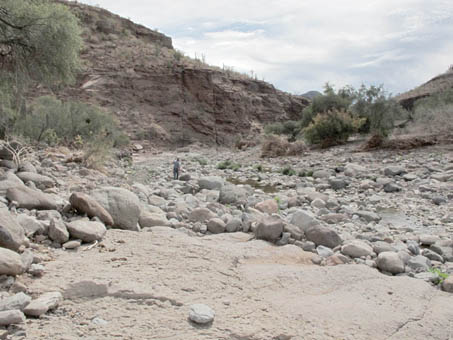
Arroyo San Patricio, looking downstream, to southeast.

Rocks in the streambed have a white ring or coating
from the mineral deposits present in the water.

Young Biznaga or Barrel Cactus in rock crevice (Ferocactus peninsulae, Cactaceae).
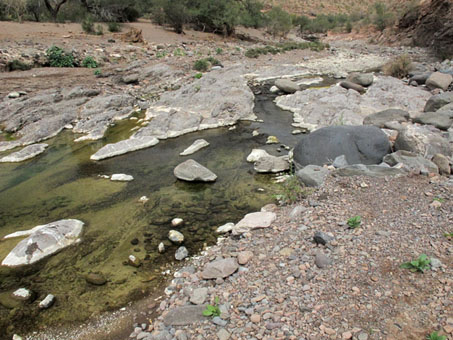
Pools are formed by a conglomerate rock base composed of small lava particles (rhyolite) embedded in a matrix of solidified ash (tuff).
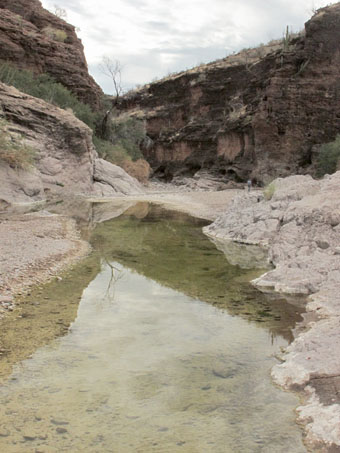
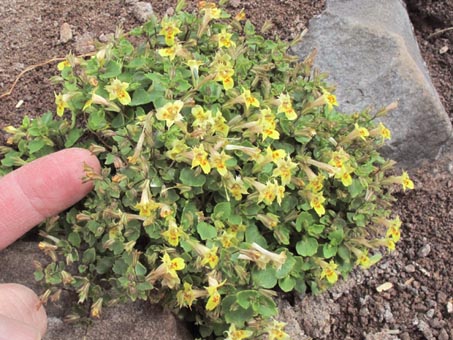
Toothpetal Monkeyflower (Mimulus dentilobus, Phrymaceae). This plant was the size of my outstretched hand, and stood out like a yellow beacon at streamside, having missed the cow hooves.
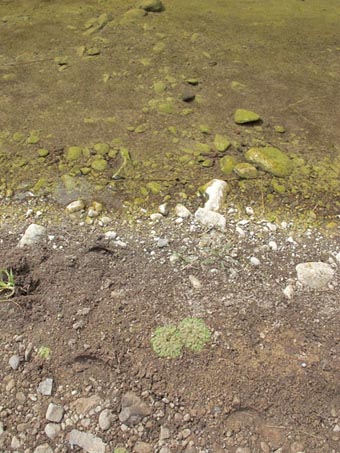
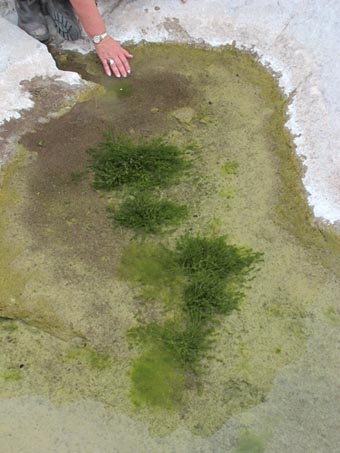
Many pools had algae scum on the edges, but this rock pool had a lovely population of Chara fragilis, green algae in the family Characeae. They look like they have stems and leaves.
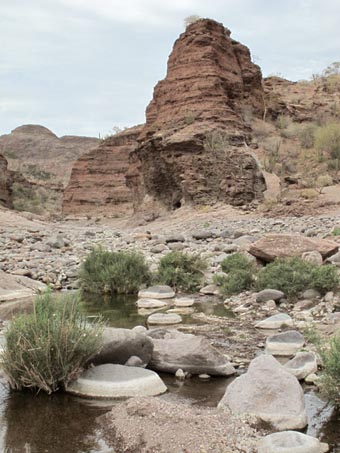
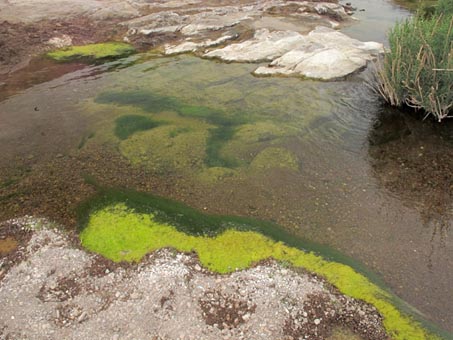
Algae blooms and Bulrush (Schoenoplectus americanus, Cyperaceae).

I just couldn't stop taking photos of the pools, especially as the light changed throughout our visit, first overcast and then it started to break up a bit. The views changed too as we looked in different directions on the way in and way out.
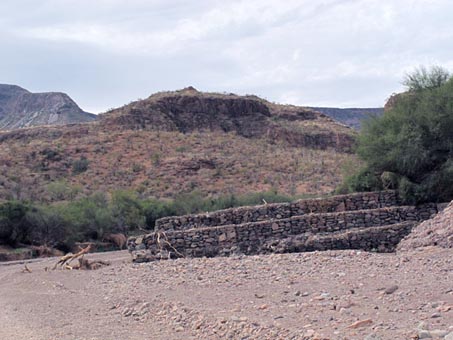
Right side of dam built with gabions (wire cages filled with rocks) that had been damming the arroyo. It was breached in the flashflood caused by heavy rains from Hurricane Paul in October 2012.
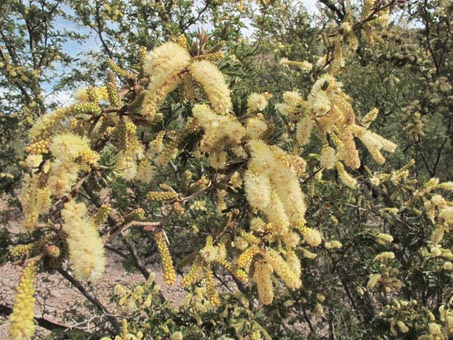
Huisache (Acacia brandegeana, Fabaceae). An endemic shrub/tree.

Arroyo San Patricio, looking across the stream to the south.
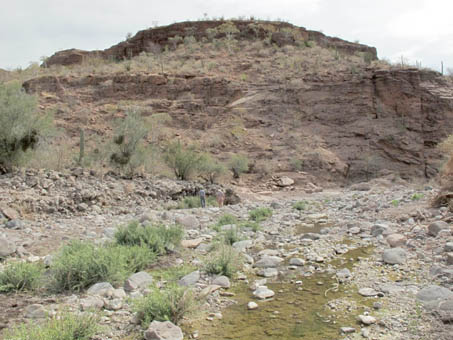
Arroyo San Patricio, farther downstream, to southeast.
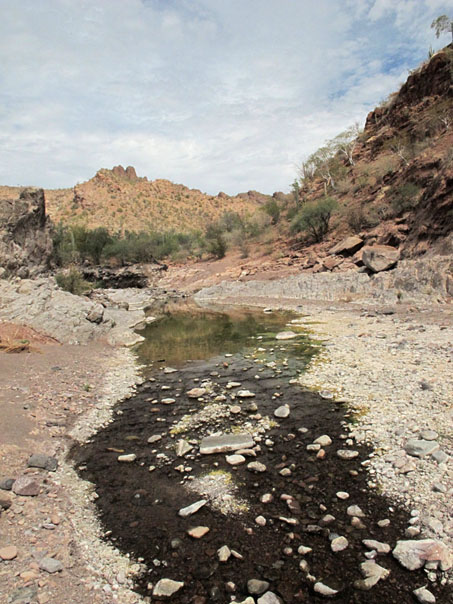
The recession of the water is clearly marked by
the visible white rocks on the edges of the water.
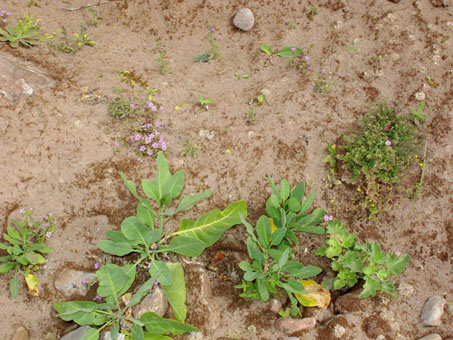
The vegetation was much sparser, and trampled by cattle along the stream edges. Some sprouts of Desert Tree Tobacco (Nicotiana glauca, Solanaceae); Purplemat (Nama coulteri, Boraginaceae); and Rock Nettle (Eucnide cordata, Loasaceae) were the most common.
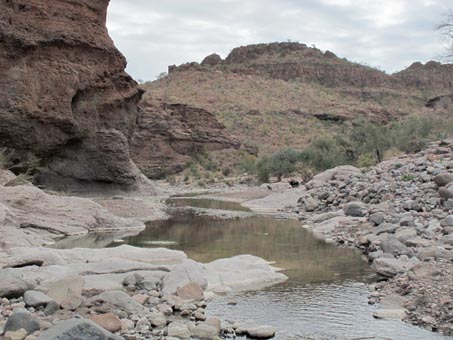
Most of the rocks pictured on the canyon floor are
rhyolite
or chunks of conglomerate with rhyolite.
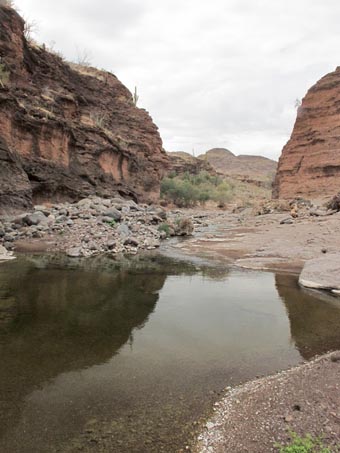
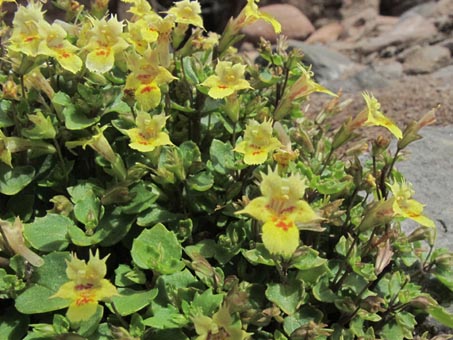
Toothpetal Monkeyflower (Mimulus dentilobus, Phrymaceae)
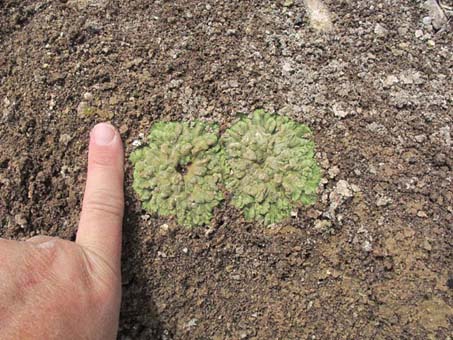
In shady, and not so shady places, the sandy edges of the stream were scattered with Cavernous Crystalwort (Riccia cavernosa liverwort, Ricciaceae).

Some slimy algae, some fibrous algae and lots of tiny sprouts of Buena Mujer or Spiny Aster (Chloracantha spinosa, Asteraceae).
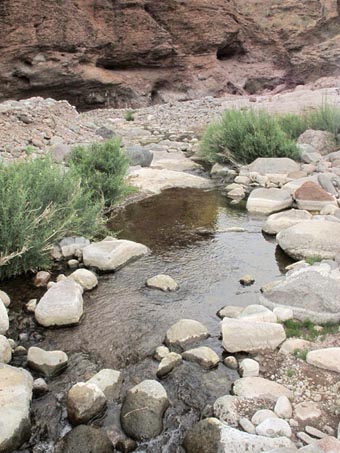
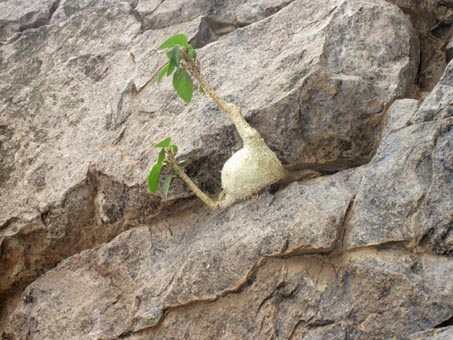
Young wild fig (Ficus palmeri, Moraceae) taking hold in rock crevice.
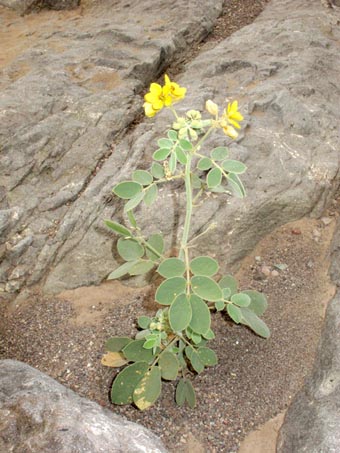
Senna confinis (Hojasén, Desert Cassia, Fabaceae), an endemic BC species. Leaves are felt-soft.
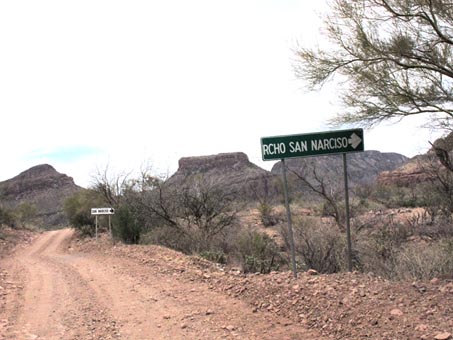
Nearing one of the remote ranches in the sierras.
We reached the end of our journey just beyond the side road to Rancho San Narciso. We were looking for more water-filled rock pools to sit and have lunch, but not finding them, and with the road continuing to climb, we decided to turn around. Beautiful tabletop mesas were off to the side and beyond the deep arroyo.




























